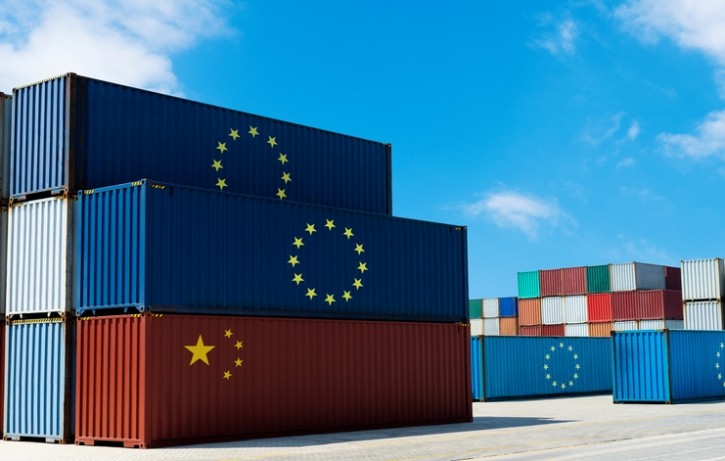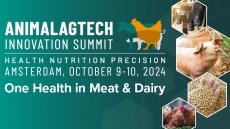FEFAC sounds alarm on EUDR implementation: Soy supply chain risks mount

With enforcement scheduled for January 2025, the lack of clear guidance from the EU Commission and unresolved logistical and legal uncertainties could severely disrupt established trade patterns, FEFAC warned.
Economic and risk impact report
FEFAC has released its first analysis of the potential economic impact of the EUDR on the feed chain and livestock sectors, focusing on soybean meal availability for 2025. Suppliers of EUDR-compliant soy have submitted few offers for Q1 2025 deliveries, a concerning sign for the industry.
Procurement costs for EUDR compliant soy products are expected to rise by 5-10%, largely due to logistical costs and regulatory uncertainty, with the total cost impact, including direct and indirect costs for other alternative protein sources, potentially reaching €2.25 bn in 2025.
The EU consumes around 30 million tons of soybeans annually, but there is no guarantee that sufficient EUDR-compliant products will be available to meet this demand in 2025. There’s market availability, but it is limited, and the grey zone of what qualifies as EUDR-compliant increases market uncertainty. FEFAC’s impact report outlined that while suppliers are making efforts to comply, the current projections suggest a gap between the demand and the supply of compliant soy.
Ukraine, Serbia, West Africa, India, and China are identified as medium to high-risk regions for potential disruption, while North America and South America present lower to medium risks, based on FEFAC’s initial supply chain disruption risk assessment and the JRC-managed forest degradation deforestation observatory map, noted FEFAC.
In addition, the global EU market share for soy usage is less than 15% and falling, meaning soy exporters have sufficient market alternatives, in case they may lose market access to the EU, stressed the trade group.
Urgent need for guidance and legal certainty
Despite reassurances from the Commission, FEFAC secretary general, Alexander Döring, pointed out that there has been no updated guidance for operators on EUDR compliance since December 2023. The next EU multi-stakeholder meeting on September 24 is expected to address some of these unresolved issues, with hopes that an additional EUDR implementation package will be published before the event.
There have been multiple calls from EU trading partners and various industry stakeholders for a postponement of the January 2025 enforcement date for the regulation, with German Chancellor Olaf Scholz only last Thursday adding his voice to such calls.
When asked whether a delay would be likely, Döring told us that it is a tricky question to answer. "If you listen to the operators and importers, they say that whatever the Commission does now—whether it's publishing additional guidance or anything else—it won't help to resolve market access issues in Q1/2025. We are already at a critical point, and any guidance issued now will come too late to make meaningful changes in time for the December 31 deadline. So, in that sense, it is already too late. However, I believe the EU may end up in a “delay by default” scenario —not just for operators, but also for the competent control authorities. They, too, lack proper guidance and resources to implement the regulation. With an incomplete set of FAQs, both operators and authorities still need specific instructions and clarification on multiple questions.
"The reality is that eight Member States have not even nominated a competent authority yet. Moreover, there has been no dialogue with these authorities so far. In fact, the first EUDR Standing Committee meeting with the Member States’ competent authorities is only happening this month. So, up until now, no substantial discussions have taken place to resolve a long list of outstanding practical issues."
He referred to German authorities request for a six-month delay which can be linked to the 24-month transition period foreseen for small and medium-sized enterprises (SMEs), and which could possibly be extended to all players to ease the pressure of immediate compliance, given the lack of EUDR readiness of a large number of operators and Member States.
Are there any requirements for feed manufacturers under the EUDR?
While the EUDR excludes compound feed from its scope, feed manufacturers involved in reselling soybean meal directly to farmers are impacted, feed producers in Northwestern Europe, in particular. These companies must provide a simplified due diligence statement (DDS light) to the competent authorities in their country. The challenge, Döring noted, is that feed manufacturers need to set up an internal accounting system for the soybean meal they purchase to ascertain whether it will be used in their compound feed or sold for home mixing, complicating compliance tracking. These and related practical aspects of EUDR for feed compounders are covered in FEFAC’s own initial EUDR professional recommendations to its members.
Additionally, downstream traders are legally required to verify the accuracy of DDS information provided by importers, but how they can fulfil this obligation remains unclear. "The new IT system being developed is supposed to grant access to the original DDS data via tokens, but there are concerns about access to sensitive geolocation data, which importers consider commercially sensitive," Döring explained.
Hide and seek
The FEFAC representative noted that many competent authorities have been avoiding the assumption of responsibility, claiming they cannot provide guidance to their operators without direction from the Commission.
“However, we argue that as the competent authorities, they are fully empowered to provide this guidance and should not be hiding behind the EC. The law clearly states that they can and should issue guidance to operators.
“Currently, soy warehouses are fully stocked, but as we move into 2025, those supplies will run out. That is when the real disruption risk arises, because unless Member States provide clear guidance on what qualifies as EUDR-compliant, importers will not take the commercial and reputational risk of shipping products. It is up to the Member States to clarify what documentational proof they deem sufficient for EUDR compliance.
“What we urgently need is legal certainty, and right now we do not have it. Anything that helps establish or re-establish legal clarity for practical operational rules will benefit everyone. Whether we like the rules or not is irrelevant; the critical issue is understanding the operational rules of the game to prevent disruption of essential soy supplies to the EU; such disruption would be economically damaging for the EU livestock sector, while undermining food security and animal health and welfare.”
Organic and non-GM sources
FEFAC is particularly alarmed by the risk the EUDR poses to smaller soy suppliers from regions like India, China, and West Africa, which are less prepared for compliance compared to larger exporters like the US, Brazil, and Argentina. China, the leading producer of organic soy for the EU market, faces challenges compounded by deteriorating EU-China trade relations.
"We have serious concerns about the disruption of established trade patterns for soy products. While larger soy-exporting countries are generally better prepared, smaller producers for niche products like non-GM soy or organic soy face significant risks of non-compliance," Döring stated.
Moreover, there has been little outreach from the EU to these smaller soy producing regions to help prepare them for EUDR requirements, he claimed.
As the clock ticks towards the enforcement deadline, FEFAC says it is calling for immediate action by the Commission and Member States to provide the necessary guidance to prevent a looming crisis for the European feed industry.

















